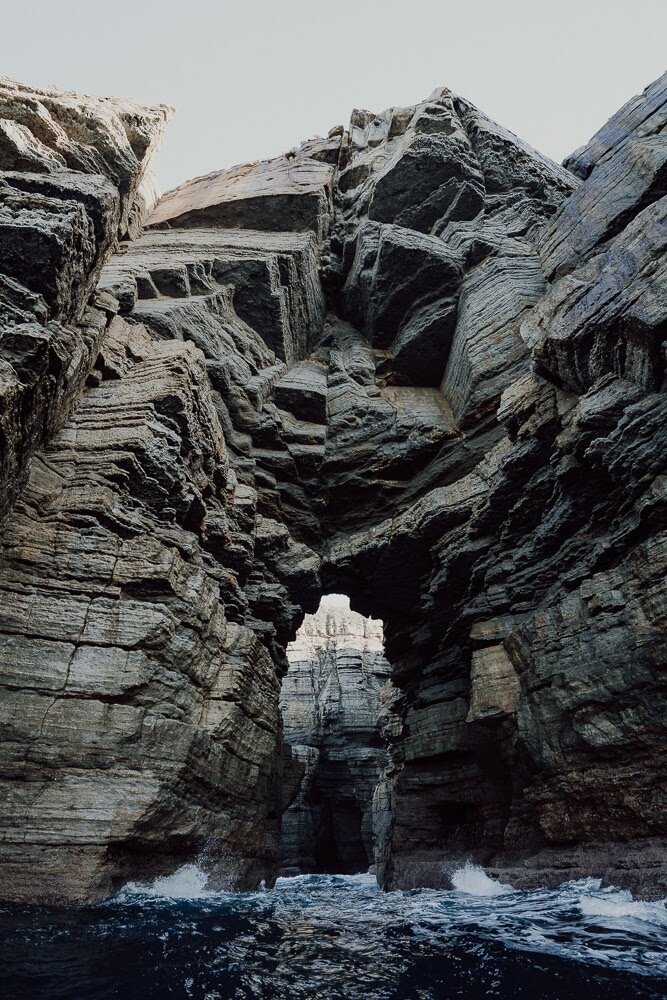5 NATURAL Reasons to visit Jervis Bay
In a land dominated by bovine fluid (dairy) farms and MacMansions (giant empty dwellings) on the beach, the surrounding area of Jervis Bay is largely undeveloped with large twisted gums and gnarly banksia trees meeting the white sand and turquoise waters. This is probably due to the fact there is a military bombing range in the North and ACT Territory and land managed by the Wreck Bay Community in the South. The tentacles of development are making their way into the townships BUT it is more than likely that our slice of paradise will mostly remain..WILD!
1. Spectacular Cliffs
Where the mighty Pacific meets the towering Sandstone cliffs that plunge deep into the blue. It is a glimpse into Australia’s ancient past, when it was part of the Super Continent Gondwana. Over millions of years the cliffs travelled from the Equator to the South Pole, froze over, defrosted and broke apart. If you want to put your own life and problems into perspective, try meditating on the timescale in which these cliffs have stood watch and realise how insignificant we actually are. May, June and July is the best time to visit as you may catch a glimpse of the migrating humpback whales as they hug the cliffs on their journey up the coast. Has anyone heard of “the glasshouse”? Visit at your own peril!
2. White Sands
It is true that Hyams beach has the whitest sand in Jervis Bay (and questionably the world?). But most surrounding beaches are also a stunning white. The older the sand, the whiter it becomes as it loses its mineral content leaving behind Silica. It is most likely over 65 000 years old. As you gaze back towards the towns of Hyams, Huskisson and Vincentia and across to Booderee you can clearly see the shapes of ancient sand dunes, now covered in houses and bush land. 18 000 years ago the coastline was 30km East. As sea levels continue to rise and fall, one day those macmansions will succumb to the tides and a new civilisation will look back on our archaeological remains and wonder who we were.
3. Winter Upwelling’s
As the East Australian Current (the gigantic oceanic river system that regulates the climate on the South Coast) relaxes, cold upwelling’s from the Continental Shelf bring crystal clear nutrient rich waters. Fish populations explode and the visibility is incredible. Large pelagic fish and many marine mammals visit the bay. Winter is actually the best time to snorkel and dive. Immerse yourselves in the elements and take a glimpse of these incredible creatures in their natural habitat.
4. Currambene Creek
A winding river system with huge ecological importance to the area. Mangrove forests and tall eucalypts line its banks providing habitat and shelter to countless creatures. Experience life amongst the mangroves first hand on the boardwalk at the Lady Denman Museum. Mid tide going low is best. Grab a paddleboard or kayak and head upstream with the flow tide and turn around on the ebb. Once you pass Myola, it feels like you have entered uncharted territory. For those adventurously inclined, try it at midnight on a new or full moon!
5. Plantation Point - Sunrise, Sunset and Vivid Light Show
Plantation Point is the place to witness the rising and setting sun in all its glory! Autumn sunsets are the most spectacular, with pastel colours painting the skies and the Great Dividing Range snaking its way up the coast. Once the sun sets, if the conditions align you may also be treated to an bioluminescent light show that looks like something out of the movie Avatar. HOT TIP, look for red seaweed washed up on the beach during the day.
We love the South Coast for its natural beauty. Lets keep it that way.
We have amazing friends who are also talented photographers. Thanks for sharing your photos Teegan Tagg.
We pay our respects to the Traditional Owners, and recognise their connection to the land and seas. We pay our respects to their elders, past, present and emerging.


